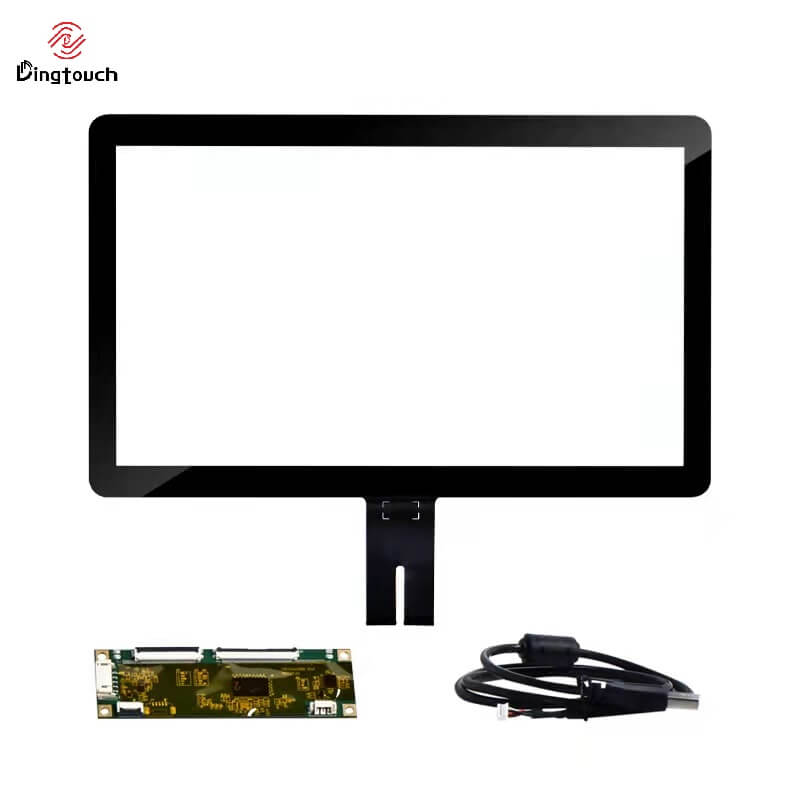

The 17.3 inch touch screen is a 16:9 multi-touch screen and it can support 10 touch points. Its structure is cover glass+sensor glass. There are three types of interface you can choose: I2C, USB, RS232 interface. This 17.3 inch touch screen can also be compatible with WINDOWS, Android, and Linux systems. If your operating system is windows, it will be easier. It’s a free driver. You can connect with your PC monitor directly to use.
Innovative & smart design, elegant looking, anti-corrosion power coating
Ergonomically and compact structure, user friendly, easy for maintenance
High touch performance, high-quality product
Cost-effective, customer-oriented design
| Manufacturer | Dingtouch |
| Product Name | 17.3 inch touch screen panel |
| Part Number | DT |
| Structure | Cover glass+Sensor glass |
| Interface | I2C/USB/RS232 |
| Cover lens outline dimension | 402x239mm |
| Cover lens Viewing dimension | 383x216mm |
| Sensor outline dimension | 399.70×235.90mm |
| Sensor Active area | 385.21×218.20mm |
| Cover lens thickness | 1.1mm |
| Sensor glass thickness | 0.7mm |
| Total touch screen thickness | 2.05mm |
| Controller | ILITEK/EETI controller board |
| Touch points | 10 |
| Working voltage | USB: 5V |
| Light transmittance | ≥85% |
| Hardness | 6H |
| Working Temperature | -20℃~ +70℃ |
| Working Humidity | 0% to 90% |
| Storage Temperature | -20℃~ +80℃ |
| Storage Humidity | 0% to 90% |
| Without individual tolerance | ±0.2mm |
| Operating system | Windows, Android, Linux OS |
| Warranty | 12months |
| Business trade items | EXW |
| Customized | Water resistance/gloves touch/AG/AF/OEM LOGO and so on |
The 17.3 inch touch screen for self-serve kiosks in libraries.
Our 17.3-inch touch screen is used in the self-service kiosk of the library, and library visitors can check in and check out their books, DVDs, CDs, and other items. The service uses radio frequency identification (RFID) technology to attach a “tag” to an item to identify and track it.
The tags have antennas that communicate with reading devices at the entrance and exit of the library. The library’s installation of an RFID system makes the checkout process easier and faster, and frees up staff to provide other customer services. Proponents say that RFID also provides better tracking and security of library items.
In order to check the item, the consumer waved the book near the device that reads the label information. This records the data and prints out a paper list of items and deadlines for the customer. This information is also stored in the library database, and reminders can be sent to customers who provide email addresses.
If a customer tries to take out a book without passing the system check, the label will signal the reader. Then, the reader will alert the librarian with a loud signal. The customer who returned the item waved the book under the reader to confirm that it had been returned to the collection.